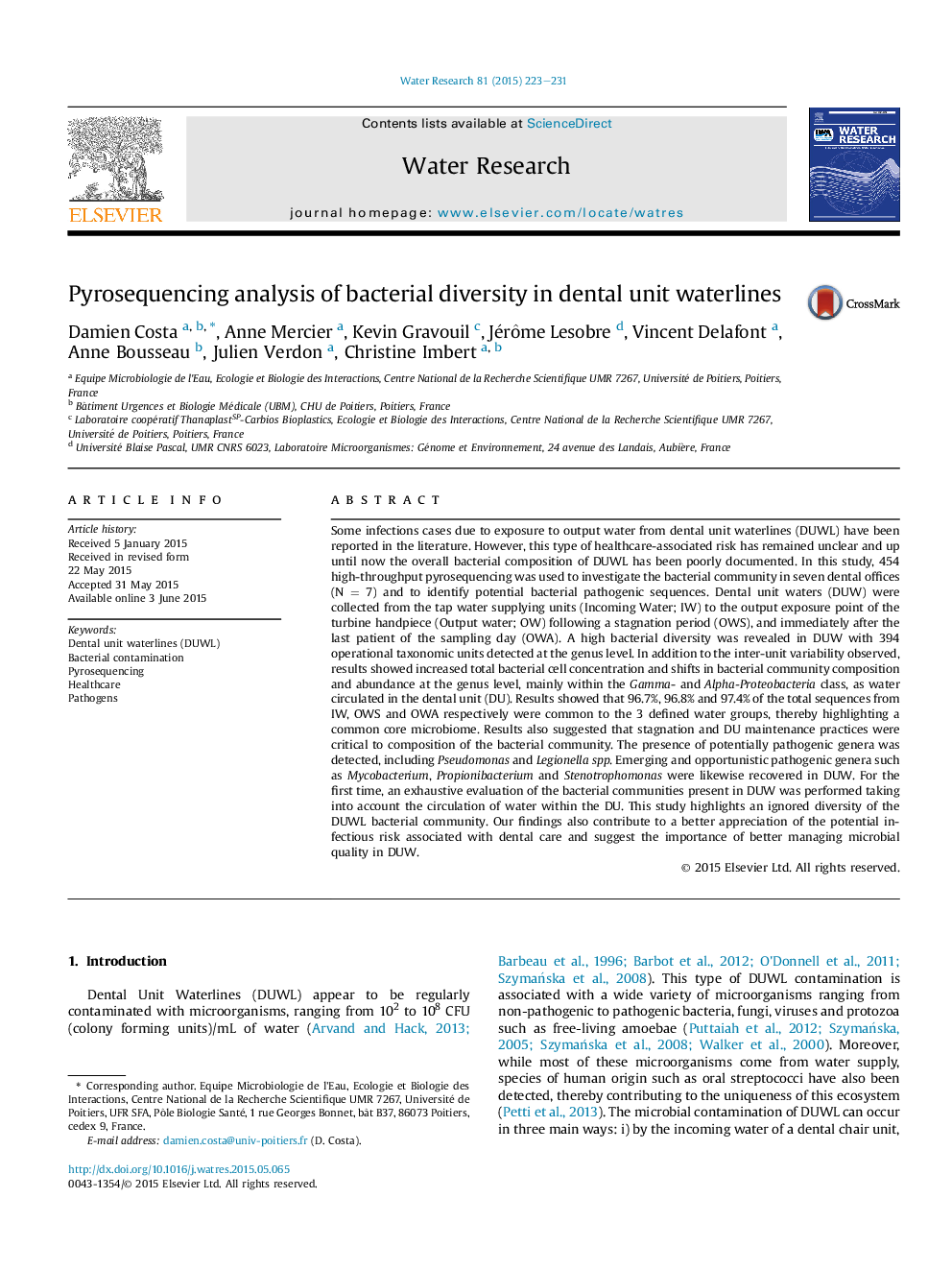| کد مقاله | کد نشریه | سال انتشار | مقاله انگلیسی | نسخه تمام متن |
|---|---|---|---|---|
| 6366098 | 1623087 | 2015 | 9 صفحه PDF | دانلود رایگان |
- 454 pyrosequencing provides an insight into bacterial community of DUW.
- Bacterial biomass and diversity were described according to the water circulation within the dental unit.
- Putative bacterial pathogens were prevalent in DUW.
Some infections cases due to exposure to output water from dental unit waterlines (DUWL) have been reported in the literature. However, this type of healthcare-associated risk has remained unclear and up until now the overall bacterial composition of DUWL has been poorly documented. In this study, 454 high-throughput pyrosequencing was used to investigate the bacterial community in seven dental offices (NÂ =Â 7) and to identify potential bacterial pathogenic sequences. Dental unit waters (DUW) were collected from the tap water supplying units (Incoming Water; IW) to the output exposure point of the turbine handpiece (Output water; OW) following a stagnation period (OWS), and immediately after the last patient of the sampling day (OWA). A high bacterial diversity was revealed in DUW with 394 operational taxonomic units detected at the genus level. In addition to the inter-unit variability observed, results showed increased total bacterial cell concentration and shifts in bacterial community composition and abundance at the genus level, mainly within the Gamma- and Alpha-Proteobacteria class, as water circulated in the dental unit (DU). Results showed that 96.7%, 96.8% and 97.4% of the total sequences from IW, OWS and OWA respectively were common to the 3 defined water groups, thereby highlighting a common core microbiome. Results also suggested that stagnation and DU maintenance practices were critical to composition of the bacterial community. The presence of potentially pathogenic genera was detected, including Pseudomonas and Legionella spp. Emerging and opportunistic pathogenic genera such as Mycobacterium, Propionibacterium and Stenotrophomonas were likewise recovered in DUW. For the first time, an exhaustive evaluation of the bacterial communities present in DUW was performed taking into account the circulation of water within the DU. This study highlights an ignored diversity of the DUWL bacterial community. Our findings also contribute to a better appreciation of the potential infectious risk associated with dental care and suggest the importance of better managing microbial quality in DUW.
198
Journal: Water Research - Volume 81, 15 September 2015, Pages 223-231
